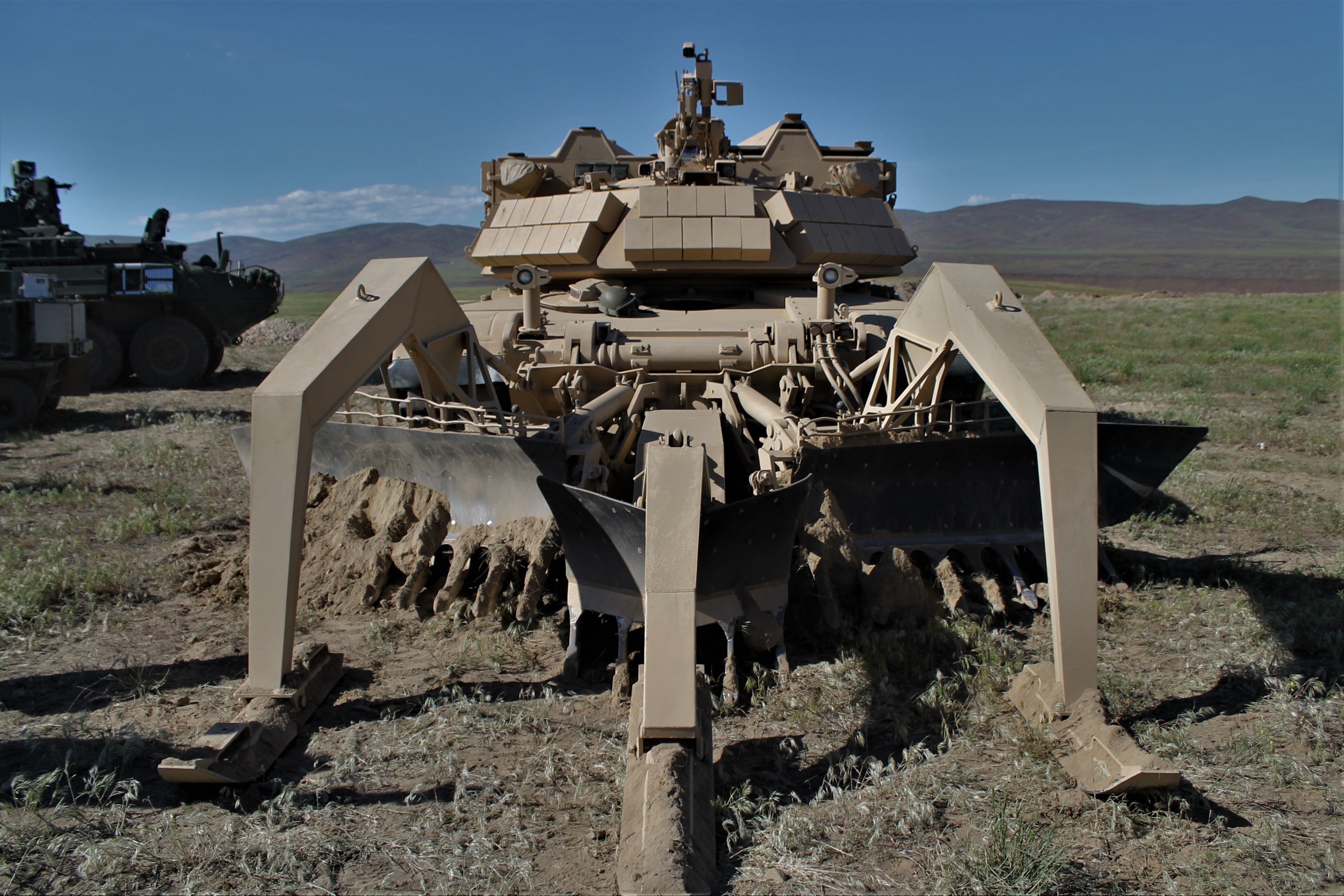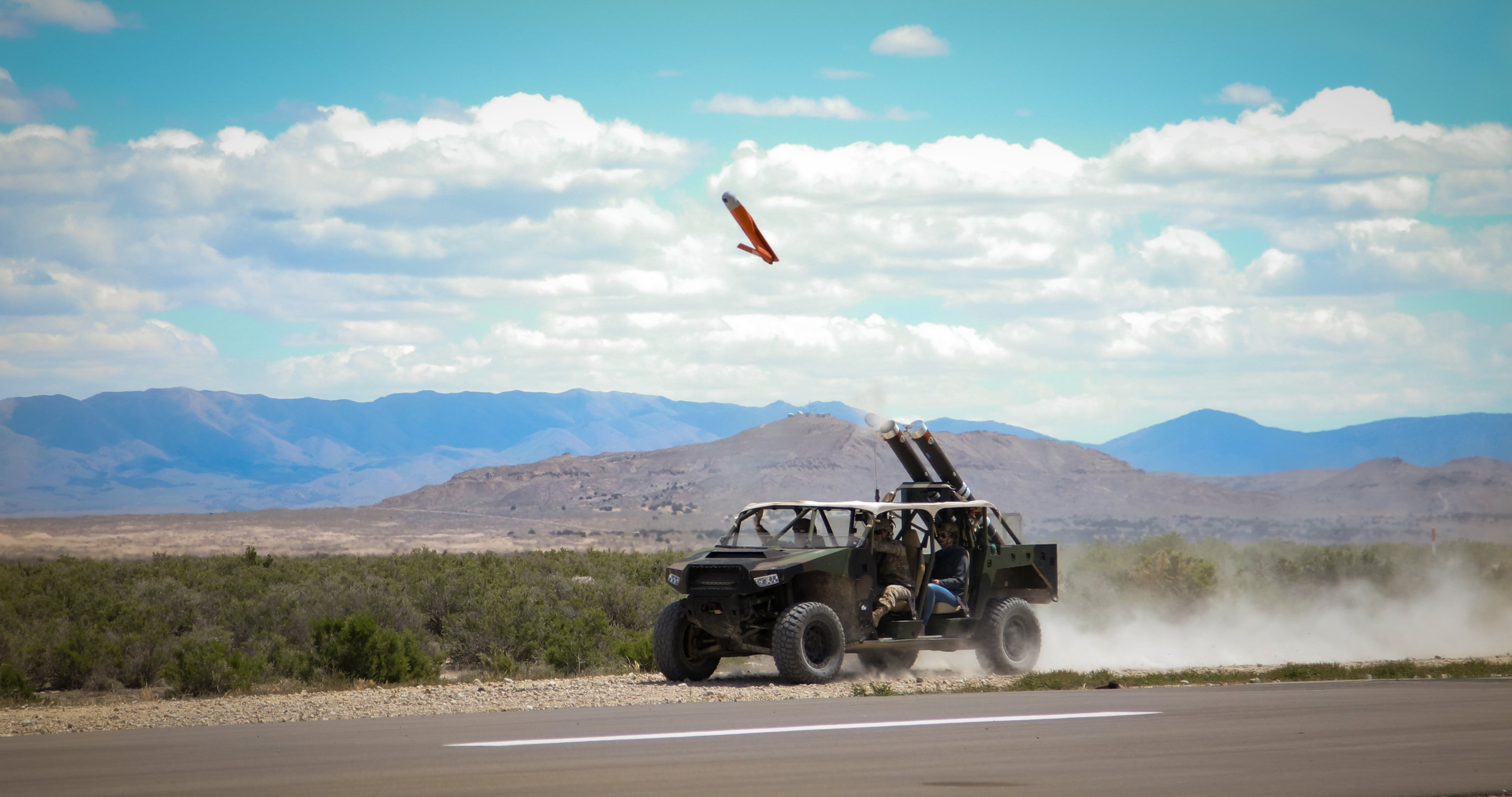UPDATE - This story previously misidentified the location of the demonstration. The demonstration took place at Fort Sill, Oklahoma.
WASHINGTON — The U.S. Army fired an autonomous launcher in a June 16 demonstration at Fort Sill, Oklahoma, focused on how it might be deployed to take out enemy ships and other defensive systems in multidomain operations in the Indo-Pacific theater.
A concept video shows C-130 transport aircraft landing on a strip in an island in the Pacific Ocean. The Autonomous Multidomain Launcher, or AML, comes off the C-130′s ramp while a High Mobility Artillery Rocket System, or HIMARS, drives out of the other aircraft. The two launchers deploy as a manned-unmanned team to strategic points on the island. One launcher fires a simulated Precision Strike Missile, or PrSM — the future Army Tactical Missile System replacement — to hit an enemy ship detected in the nearby ocean. The other fires an extended-range version of PrSM to take out an air defense system located on an enemy-occupied island.
Once the missiles destroy their targets, the launchers head back to the bellies of the C-130 and the aircraft takes off while U.S. fighter jets deploy during the window of opportunity created by the destruction of those enemy targets.
In the demonstration, according to Brig. Gen. John Rafferty, who is in charge of the Army’s long-range precision fires modernization effort, the AML repeated the process and subsequently deployed to two other islands following the first scenario.
The 1.25-hour mission was led by soldiers from the HIMARS platoon in the18th Field Artillery Brigade based at Fort Bragg, North Carolina.
Overall, the Army fired seven rockets simulating the PrSM’s future range capability from roughly 500 kilometers to well over that distance, and the service also demonstrated a shorter-range rocket capability in the third island scenario to reflect a more tactical fight in support of divisions and corps, Rafferty told reporters in a phone call directly after the demonstration.
The AML is an adapted HIMARS with technology to include leader-follower autonomy, autonomous waypoint navigation and drive-by-wire capability.
RELATED

The science and technology effort came together several years ago when the Long-Range Precision Fires Cross-Functional Team within Army Futures Command joined up with the service’s Combat Capabilities Development Command’s Aviation and Missile Center and Ground Vehicle Systems Center to develop the prototype launcher.
The AML is equipped with a remote launcher turret and fire control system that enables compatibility with current munitions like the Guided Multiple Launch Rocket System and future weapons like PrSM.
The demonstration showed the soldiers trying it out that the autonomous launcher could help them pass off current activities within operations that are dangerous or that can’t be done with systems today.
Feedback showed soldiers felt the capability could keep them in the fight longer and offered more protection and increased lethality such as a deeper magazine since the cab of the HIMARS can be replaced to accommodate more munitions.
“You can have all kinds of different configurations of missiles depending on what kind of fight you want to go into,” Jeffrey Langhout, the Aviation and Missile Center director, said during the call with reporters. “Easily one of the biggest things it does is it just physically gives us more room without having to go spend gazillions of dollars to buy a whole new launcher. It enables us to kind of use what we have and do some minor modifications to it, which gives us options moving forward on however the Army chooses to move forward with the missile fleet.”
That could include using missiles from other services, Langhout noted, and integrating those into the launcher as well.
RELATED

The program also uses technology efforts already under development within the Army such as the robotic technology kernel that will be used in future robotic combat vehicle capability, other mature technology-enabling leader-follower autonomy and the war-fighter machine interface.
The effort has cost roughly $10 million so far — some of which came through congressional plus-ups — to create the prototype and demonstrate its capability, Rafferty said.
The Army has yet to decide whether an autonomous launcher will be a part of the future force, but the demonstration marks a starting point. Rafferty said the Army will continue to work with the operational force in the Indo-Pacific theater to develop the concept, and the service will continue to mature the technology.
The service received approval to move forward on a Joint Capabilities Technology Demonstration and will partner with the Indo-Pacific combatant command and the Aviation and Missile Center to explore the capability through early prototyping and participation in robust operational exercises in theater over the next several years.
The Army will also spend the next year, according to Rafferty, working on a transition agreement with the acquisition side of the house to develop what might eventually become a program of record. “We’re not there yet. It’s still pretty early in the [science and technology], and this concept development was really to show our acquisition partners and AFC leadership what we think we could do and what could be.”
Jen Judson is an award-winning journalist covering land warfare for Defense News. She has also worked for Politico and Inside Defense. She holds a Master of Science degree in journalism from Boston University and a Bachelor of Arts degree from Kenyon College.







